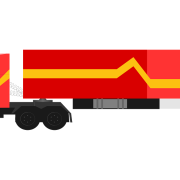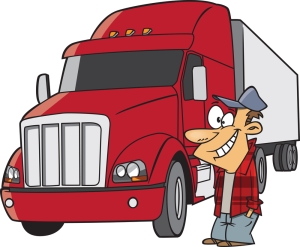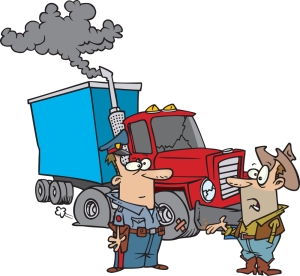We have a number of clients in the transportation industry. Given the number of claims to which trucks and truck drivers are susceptible, we’re always eager to help our clients manage, track, and settle their claims as quickly and efficiently as possible.
Two of our client companies — Long Haul Cowboys, Inc. and Big Rigs Amalgamated — recently had separate incidents at roughly the same time. Since each of those incidents produced multiple claims, we asked the CEOs of those companies — Tiny Littlestone of Long Haul Cowboys and Duke Waslewski from Big Rigs Amalgamated — if they would talk to us together. They said yes.
What follows is a cleaned-up transcript of our conversation, with all the bad truck-driver words taken out. Tiny is represented as TL. Duke is represented as DW. And we, as always, are represented as CE (Claims Expert):
CE: Thank you for joining us today, gentlemen.
Burt and his new rig.
TL: It’s good to be here.
DW: Speak for yourself, Tiny.
CE: Well, great start there, men. Let’s start with you, Duke. It seems you had a man who was refusing to drive. Is that right?
DW: Yeah. Burt Sniglitz said he just wanted to stand and admire his new truck.
CE: Did you file any insurance claims on Burt?
DW: No. But we did file claims against Burt for professional liability, property damage, and errors and omissions.
CE: Can you be more specific?
DW: Sure. The professional liability was because he was loitering on company property. The property damage was because he was kicking the tires. And the errors and omissions was because he omitted his job, which was supposed to be driving.
CE: And what was the incident to which you tied those claims?
DW: Burt was an accident waiting to happen. And he did.
CE: Okay, Duke. That’s quite the story, indeed. Tiny, I understand one of your drivers was involved in a crash caused by faulty equipment.
Ernie gets busted on the road.
TL: Yep. But it wasn’t exactly one of our drivers.
CE: Who was it?
TL: That was Ernie Bilge, our head mechanic.
CE: He got pinched for faulty equipment?
TL: He said he was taking it for a test drive to see if the tires were really flat and to determine if the engine was emitting excessive exhaust.
CE: And what were the charges?
TL: Driving with flat tires and emitting excessive exhaust.
CE: And what types of claims did you have to file for that incident?
TL: Well, we had two property damage claims — one for the flat tires and one for the blown engine.
CE: Uh huh. Anything else?
TL: We filed a negligence claim against Ernie.
CE: For what?
TL: Driving with a suspended license.
CE: Why was his license suspended?
TL: Because he had a prior arrest for driving with flat tires and emitting excessive exhaust.
CE: Thank you, gentlemen. We need a drink.
Claim Management For The Transportation Industry
Is that story made up? Well, yes. Is it deliberately absurd. Well, yes. But the fact of the matter is you can manage almost anything — and all of your liability-related incidents — if you have the right claim system. If you’re in the transportation business, you likely don’t have to deal with people like Burt and Ernie. Nevertheless, we’re here to show you how Cloud Claims can transform your claims operations, whenever you’re ready.
In the meantime, be careful out there.










